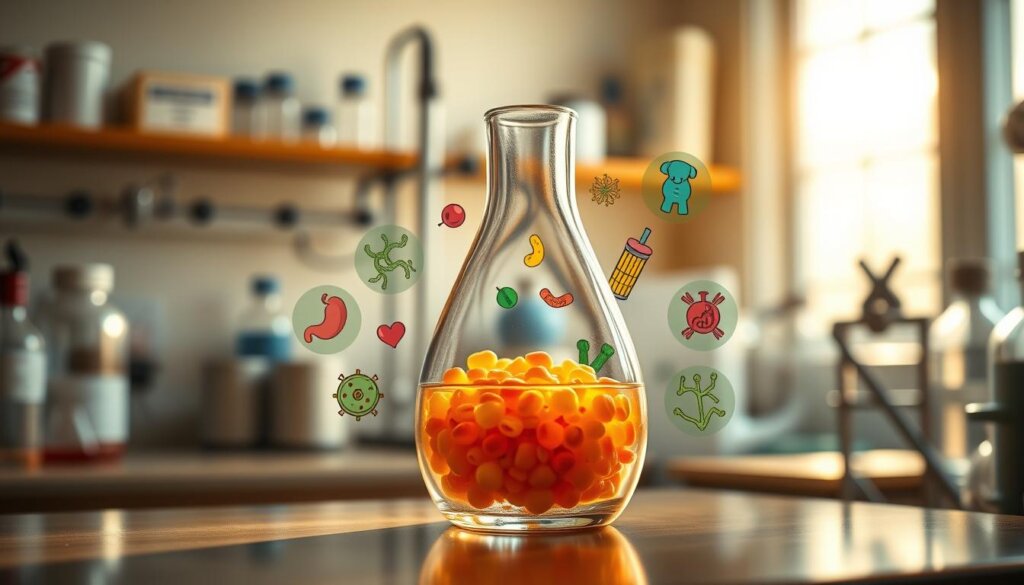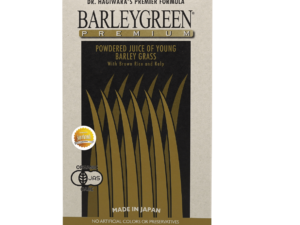Can a single probiotic strain solve all your health woes? While many people grab the first supplement they see, the truth is far more fascinating. Probiotics are living microorganisms that act like microscopic superheroes in the body, but their powers depend entirely on their unique identities.
These beneficial bacteria, primarily from the Bifidobacteria and Lactobacilli families, work like specialized team players. Some boost immunity, while others tackle infections or improve digestion. Just as a soccer team needs strikers, defenders, and goalkeepers, your gut thrives when specific strains perform distinct roles.
Research shows that combining certain types creates synergistic effects—like teammates passing a ball to score a goal. For example, Lactobacillus acidophilus might enhance nutrient absorption, while Bifidobacterium longum supports mental clarity. This teamwork explains why health benefits of probiotics vary widely between products.
Choosing the right strains isn’t about popularity—it’s about matching their strengths to your needs. Whether aiming for better digestion or stronger immunity, understanding these microscopic allies helps you make smarter choices for lasting gut health.
Key Takeaways
- Probiotic strains have unique roles, similar to players on a sports team
- Combinations of strains often create enhanced health effects
- Strain specificity determines outcomes like immunity or digestion support
- Common genera include Lactobacilli and Bifidobacteria
- Product labels should list strain names for targeted benefits
Background of Probiotics: Definition and Historical Context
Long before probiotic supplements lined pharmacy shelves, cultures worldwide unknowingly harnessed good bacteria through fermented foods. Scientists first connected these microorganisms to health in the early 1900s, noticing yogurt-consuming communities lived longer. The term “probiotics”—combining Latin “pro” (for) and Greek “bios” (life)—emerged decades later, perfectly describing these life-supporting allies.
Understanding the Role of Beneficial Bacteria
Your gut houses a bustling metropolis of 100 trillion bacteria—more than stars in the Milky Way. This ecosystem includes over 500 species, each contributing to functions like nutrient absorption and immune defense. Like snowflakes, no two people share identical microbial fingerprints, explaining why personalized approaches to probiotics gain traction.
The Evolution of Probiotic Research
Early studies focused on yogurt’s mysterious health benefits. By the 1960s, researchers identified specific strains like Lactobacillus acidophilus. Modern science now maps how distinct microorganisms influence everything from mood to metabolism. Despite advancements, scientists agree: we’ve barely scratched the surface of understanding our inner microbial universe.
This journey from traditional fermented foods to DNA sequencing reveals a truth—our bodies evolved with these tiny partners. As research progresses, one fact remains clear: nurturing your unique gut community is key to thriving in modern life.
Classification of Probiotics: Genus, Species, and Strains
Think of probiotics as a diverse family tree where each branch serves unique roles. Like organizing books in a library, scientists classify these bacteria into three tiers: genus, species, and strain. This system helps identify which microorganisms perform specific tasks in the body.

Differences Between Genus, Species, and Strain
A genus acts like a surname shared by related organisms. For example, Lactobacillus is a common probiotic genus. Species narrow it down further—acidophilus describes a group within that family. Strains are the individuals, like Lactobacillus acidophilus W55, each with unique genetic fingerprints.
Imagine domestic cats:
- Genus: All house cats (Felis)
- Species: Persian or Siamese breeds
- Strain: A specific cat with distinct traits
This precision matters because two strains from the same species might behave differently in your gut.
Why Strain Variability Matters for Health Benefits
Strain-level differences explain why one probiotic eases bloating while another boosts immunity. Research shows specific strains outperform generic blends. For instance, certain acidophilus variants enhance nutrient absorption, while others target pathogens.
Always check labels for full scientific names. The strain code (like W55) ensures you’re getting the exact bacteria studied in clinical research. This knowledge transforms random guessing into targeted health strategies.
Examining What Do the Different Strains of Probiotics Do
Imagine your gut as a bustling city where probiotic strains act like specialized security teams. These microscopic allies deploy unique strategies to maintain order and protect residents from harmful invaders. Their methods range from physical crowd control to biochemical warfare, ensuring optimal digestive health.
Mechanisms of Action in the Gut
Probiotic bacteria compete fiercely for resources and attachment sites in intestinal walls. This turf war prevents harmful microbes from gaining a foothold. Some strains secrete antimicrobial compounds—natural weapons that neutralize threats without disrupting beneficial neighbors.
Specific probiotics communicate with immune cells through signaling molecules. This dialogue helps regulate inflammation levels and strengthens gut barrier function. Others produce enzymes that break down food particles, making nutrients more accessible for absorption.
Strain-Specific Health Outcomes
Research reveals how particular strains deliver targeted health benefits:
- Lactobacillus rhamnosus GG reduces diarrhea duration
- Bifidobacterium lactis HN019 enhances immune response
- Saccharomyces boulardii prevents antibiotic-related gut issues
These examples show why strain selection matters. A probiotic effective for lactose digestion might not address immune concerns. Matching strain capabilities to personal needs unlocks their full potential for gut health optimization.
Health Benefits and Research Insights on Probiotics
Modern science continues to uncover surprising ways probiotics influence overall wellness. These microscopic allies demonstrate remarkable versatility, addressing concerns from digestive health to immune resilience. Let’s explore what rigorous studies reveal about their multifaceted benefits.

Digestive Health and Immune Support
Specific probiotic strains excel at maintaining gut balance. Lactobacillus casei improves nutrient absorption, while Bifidobacterium infantis reduces bloating. Research shows certain combinations decrease diarrhea duration by 25% in adults.
Beyond the gut, these microorganisms act as immune coaches. Clinical trials note 30% fewer respiratory infections in regular users. Children taking Lactobacillus rhamnosus experience milder allergy symptoms and faster recovery times.
Findings from Clinical Studies
Recent breakthroughs reveal broader impacts:
| Health Benefit | Key Strains | Study Findings |
|---|---|---|
| Blood Sugar Balance | L. acidophilus | 12% improvement in glucose levels |
| Skin Health | B. lactis | 40% reduction in childhood eczema |
| Oral Protection | S. salivarius | 50% fewer cavities in trial groups |
While results impress, responses vary between individuals. A 2023 review emphasizes matching strains to personal needs. For example, Saccharomyces boulardii prevents antibiotic-related gut issues but doesn’t aid weight management.
Emerging research explores connections to mental health and metabolic function. Though promising, scientists caution that probiotics complement—rather than replace—medical treatments. Always consult healthcare providers for personalized advice.
Review of Common Probiotic Strains and Their Functions
Navigating probiotic options feels like meeting potential allies—each with unique skills to support your body. Let’s explore the standout performers in microbial communities.
Bifidobacteria Champions
Bifidobacterium animalis subsp. lactis shines in digestive support. Studies show it improves constipation frequency by 40% and may also aid cholesterol management. Its cousin B. bifidum dominates infant gut health, creating protective barriers against harmful bacteria.
B. longum supports mental clarity by producing mood-regulating compounds. These species thrive throughout life, adapting to dietary changes and aging digestive systems.
Lactobacillus Leaders
Lactobacillus acidophilus ranks among the most versatile strains. It enhances vaginal health and may also reduce lactose intolerance symptoms. For antibiotic recovery, L. rhamnosus GG prevents diarrhea in 34% of cases according to clinical trials.
Unique variants like L. reuteri combat oral pathogens, reducing cavity-causing microbes by 50%. L. plantarum 299v specifically targets IBS discomfort while boosting iron absorption.
| Genus | Key Species | Top Benefits |
|---|---|---|
| Bifidobacterium | animalis, lactis | Digestive regularity |
| Lactobacillus | acidophilus, rhamnosus | Immune & gut support |
| Saccharomyces | boulardii | Antibiotic protection |
Beyond the Basics
Saccharomyces boulardii, a beneficial yeast, survives stomach acid to combat traveler’s diarrhea. Soil-based probiotics like Bacillus subtilis form protective spores, making them shelf-stable allies for gut resilience.
Each strain offers specialized benefits—like microscopic tools for different health challenges. Matching these microbial partners to personal needs creates targeted wellness strategies.
Integrating Probiotic Sources into Your Diet
Your kitchen holds more microbial allies than you might realize. From tangy yogurt to spicy kimchi, probiotic-rich foods offer delicious ways to support gut health. But not all sources pack equal punch—understanding quality markers helps maximize benefits.
Probiotic-Rich Foods and Fermented Products
Traditional fermented foods like kefir and sauerkraut naturally contain live cultures. Look for labels stating “active cultures” and refrigerated storage. Asian staples—natto with Bacillus subtilis or miso with Lactobacillus—provide diverse probiotic strains.
Effective products need ≥1 million CFU per gram. Homemade ferments may lack consistent counts. Store-bought yogurt often lists specific strains like Bifidobacterium lactis, ensuring targeted support.
Choosing Between Supplements and Natural Sources
Supplements guarantee precise CFU counts through expiration dates—crucial for therapeutic needs. They bypass stomach acid better than some foods. However, fermented products offer complementary nutrients like vitamin K2 in natto.
For daily maintenance, kombucha or kimchi might suffice. Those addressing specific concerns like antibiotic recovery often benefit more from high-potency supplements. Always compare labels to match strains with health goals.
FAQ
How do probiotic strains like Lactobacillus acidophilus support digestion?
Lactobacillus acidophilus helps break down food, enhances nutrient absorption, and balances gut bacteria. Studies show it may reduce bloating and support regular bowel movements by maintaining healthy gut flora.
Can Bifidobacterium lactis improve immune function?
Research suggests Bifidobacterium lactis strengthens immune responses by interacting with gut-associated lymphoid tissue. Brands like Culturelle use this strain to promote respiratory health and reduce infection risks.
Why do some probiotic supplements list genus, species, and strain?
Labels like Lactobacillus (genus), rhamnosus (species), and GG (strain) ensure transparency. Strain specificity matters because even within the same species, different strains offer unique benefits, such as combating diarrhea or easing IBS symptoms.
Are fermented foods like yogurt sufficient for gut health?
Yogurt contains live cultures like Streptococcus thermophilus, which aid digestion. However, supplements like Align or Renew Life provide targeted strains in higher CFUs for conditions like antibiotic-associated diarrhea or inflammatory bowel disease.
How do probiotics interact with the gut-brain axis?
Certain strains, such as Bifidobacterium longum 1714, influence neurotransmitter production and may reduce anxiety. Emerging studies link gut microbiome balance to mental health through this bidirectional communication pathway.
What factors affect probiotic survival in the digestive tract?
Stomach acid, bile salts, and storage conditions impact viability. Delayed-release capsules or shelf-stable products like Florastor use Saccharomyces boulardii, a yeast strain resistant to harsh gastric environments.
Can probiotics help with lactose intolerance?
Strains like Lactobacillus bulgaricus in brands such as GoodBelly produce lactase enzymes, breaking down lactose. Regular consumption of these probiotics may reduce discomfort from dairy products.
Are multi-strain probiotics more effective than single-strain options?
Multi-strain blends like Visbiome or Garden of Life combine complementary bacteria for broader benefits. Synergistic effects between strains may enhance colonization and improve outcomes for conditions like ulcerative colitis.






